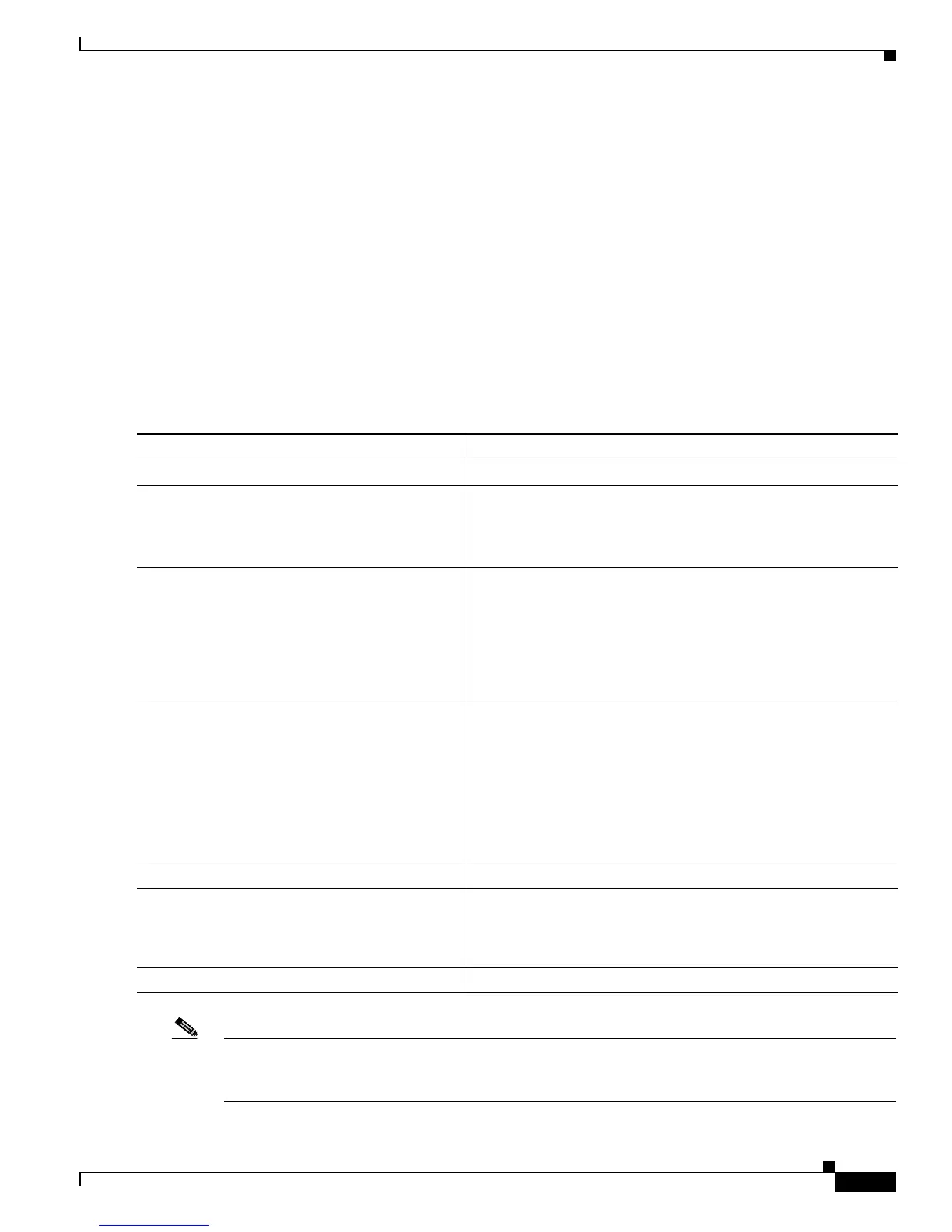9-25
Catalyst 2950 Desktop Switch Software Configuration Guide
78-11380-03
Chapter 9 Configuring STP
Configuring Basic STP Features
For information on how to configure load sharing on trunk ports by using STP port priorities, see the
“Load Sharing Using STP” sectiononpage8-24.
Configuring STP Path Cost
The STP path cost default value is derived from the media speed of an interface. In the event of a loop,
STP considers cost when selecting an interface to put in the forwarding state. You can assign lower cost
values to interfaces that you want selected first and higher cost values that you want selected last. If all
interfaces have the same cost value, STP puts the interface with the lowest interface number in the
forwarding state and blocks other interfaces.
STP uses the cost value when the interface is configured as an access port and uses VLAN port cost
values when the interface is configured as a trunk port.
Beginning in privileged EXEC mode, follow these steps to configure the STP cost of an interface:
Note The show spanning-tree interface interface-id interface configuration command only displays
information for ports that are in a link-up operative state and are configured for DTP. Otherwise, you can
use the show running-config privileged EXEC command to confirm the configuration.
Command Purpose
Step 1
configure terminal Enter global configuration mode.
Step 2
interface interface-id Enter interface configuration mode, and specify an interface to
configure. Valid interfaces include physical interfaces and
port-channel logical interfaces (port-channel
port-channel-number).
Step 3
spanning-tree cost cost Configure the cost for an interface that is an access port.
In the event of a loop, STP considers the path cost when selecting
an interface to place into the forwarding state. A lower path cost
represents higher-speed transmission.
For cost, the range is 1 to 200000000; the default value is derived
from the media speed of the interface.
Step 4
spanning-tree vlan vlan-id cost cost Configure the VLAN cost for an interface that is a trunk port.
In the event of a loop, STP considers the path cost when selecting
an interface to place into the forwarding state. A lower path cost
represents higher-speed transmission.
For vlan-id, the range is 1 to 1005. Do not enter leading zeroes.
For cost, the range is 1 to 65535; the default value is derived from
the media speed of the interface.
Step 5
end Return to privileged EXEC mode.
Step 6
show spanning-tree interface interface-id
or
show spanning-tree vlan vlan-id
Verify your entries.
Step 7
copy running-config startup-config (Optional) Save your entries in the configuration file.

